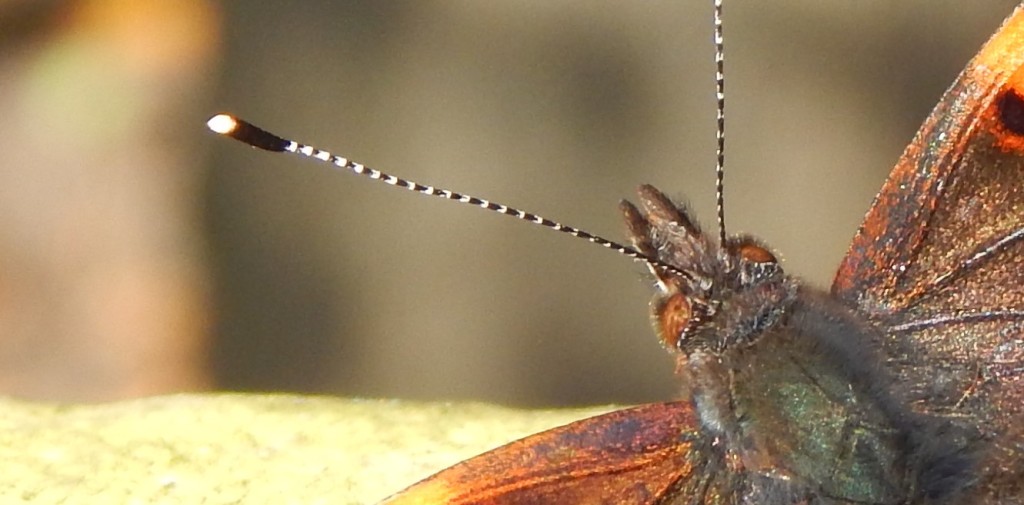
[355] Vanessa atalanta, Red Admiral
Vanessa cardui, Painted Lady
Introduction
Our last butterfly is Vanessa atalanta, the Red Admiral. It is a well-known common species that is mostly black and has nothing to do with admirals. Two hundred years ago it was called the Red Admirable.
Vanessa cardui, the Painted Lady, is a closely related species, but does not look similar. It used to be called the Cosmopolitan in America.
Most of the other species of Vanessa (and some close relatives) have names that include either ‘Admiral’ or ‘Lady.’
Taxonomy
Kingdom – Animals
Phylum – Arthropods
Class – Insects
Order – Lepidoptera (Butterflies and Moths)
Family – Nymphalidae
Tribe – Nymphalini
Genus – Vanessa
Scientific Names – Vanessa atalanta, Vanessa cardui
Name
The Red Admiral is mostly black but the small bit that is coloured is mostly bright red (or sometimes a bit orange.)
Vanessa comes from a Latinized form of an Ancient Greek god Phanes. It is not cognate with the relatively modern given name Vanessa. Atalanta also comes from Greek mythology. I think scientists, when they couldn’t think of anything else, would name anything after anyone from ancient mythology – and for butterflies they were especially fond of young ladies or nymphs.
There is no specific reason why the name Painted Lady is used. The plant Trillium undulatum is also called a Painted Lady. (There are several completely different plants called Naked Ladies.)
Carduus was one form of the Latin name for some thistles, as we have seen in [111] Artichoke. Cardui is, of course, the genitive case, ‘of the thistle,’ from one of its food sources.
Description
Both species share the tribe Nymphalini with other species we have already met – [009] Peacock, [010] Tortoiseshell and [274] Comma. Members of this tribe are the largest UK species of butterflies.
The Red Admiral generally rests with its wings open, showing the prominent bright red band round its body. Most of the wings are black, with some white spots and the red section, which can sometimes tend towards orange, has some small dark dots towards the back.
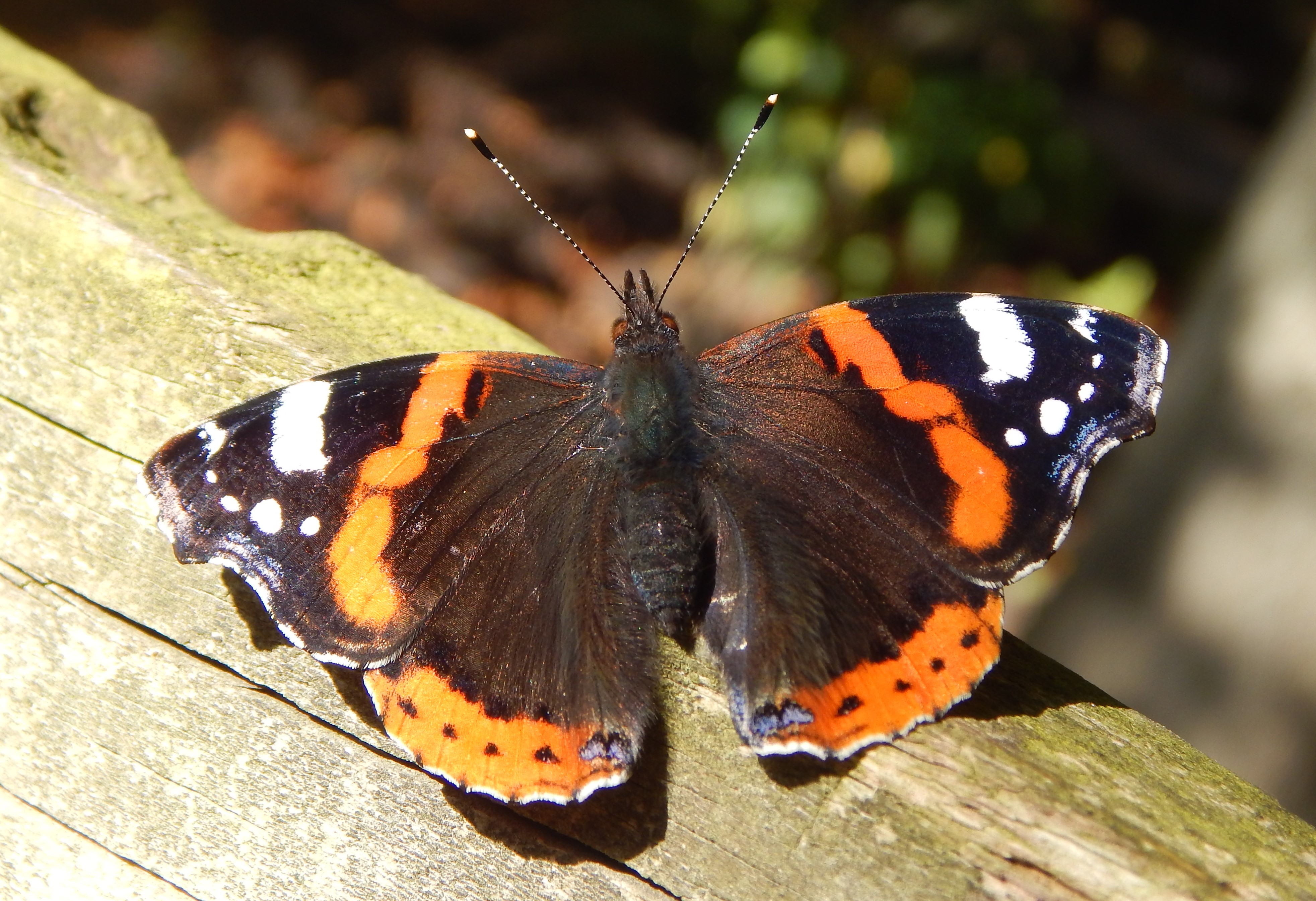


It is not so easily recognized from the undersides of the wings, which are a more camouflaged mottled bluish grey-brown.

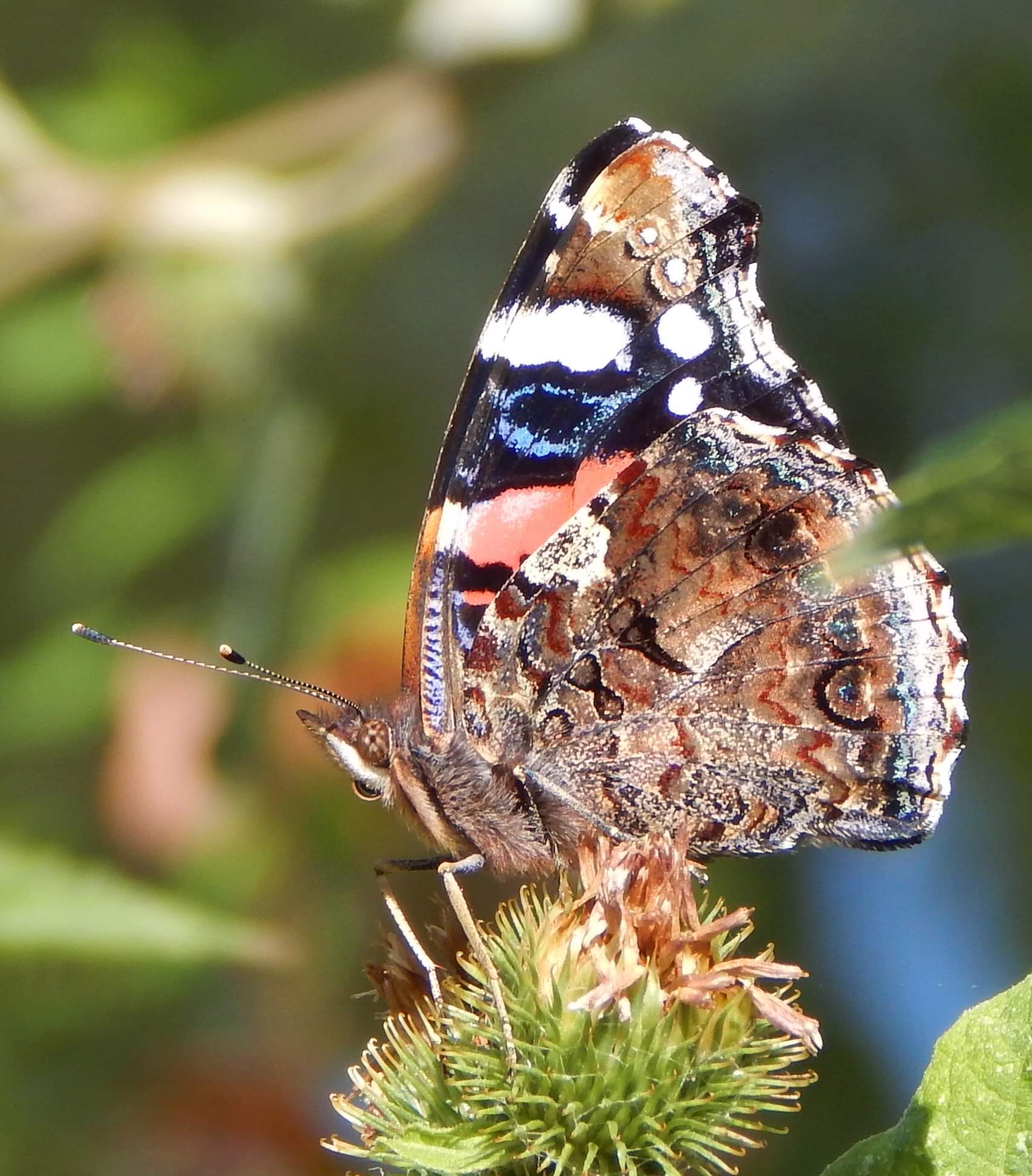
Caterpillars are mainly found on [353] the Stinging Nettle. Adults take nectar from flowers such as [060] Buddleia, or consume overripe fruit.
The Painted Lady has a similar appearance apart from its colouration. Most of the upper wings are a tawny orange-brown with some dark spots. The tips of the forewings are dark with white markings, like the Red Admiral, and the central part, including its body, is a pale brown (where the Red Admiral is black.)

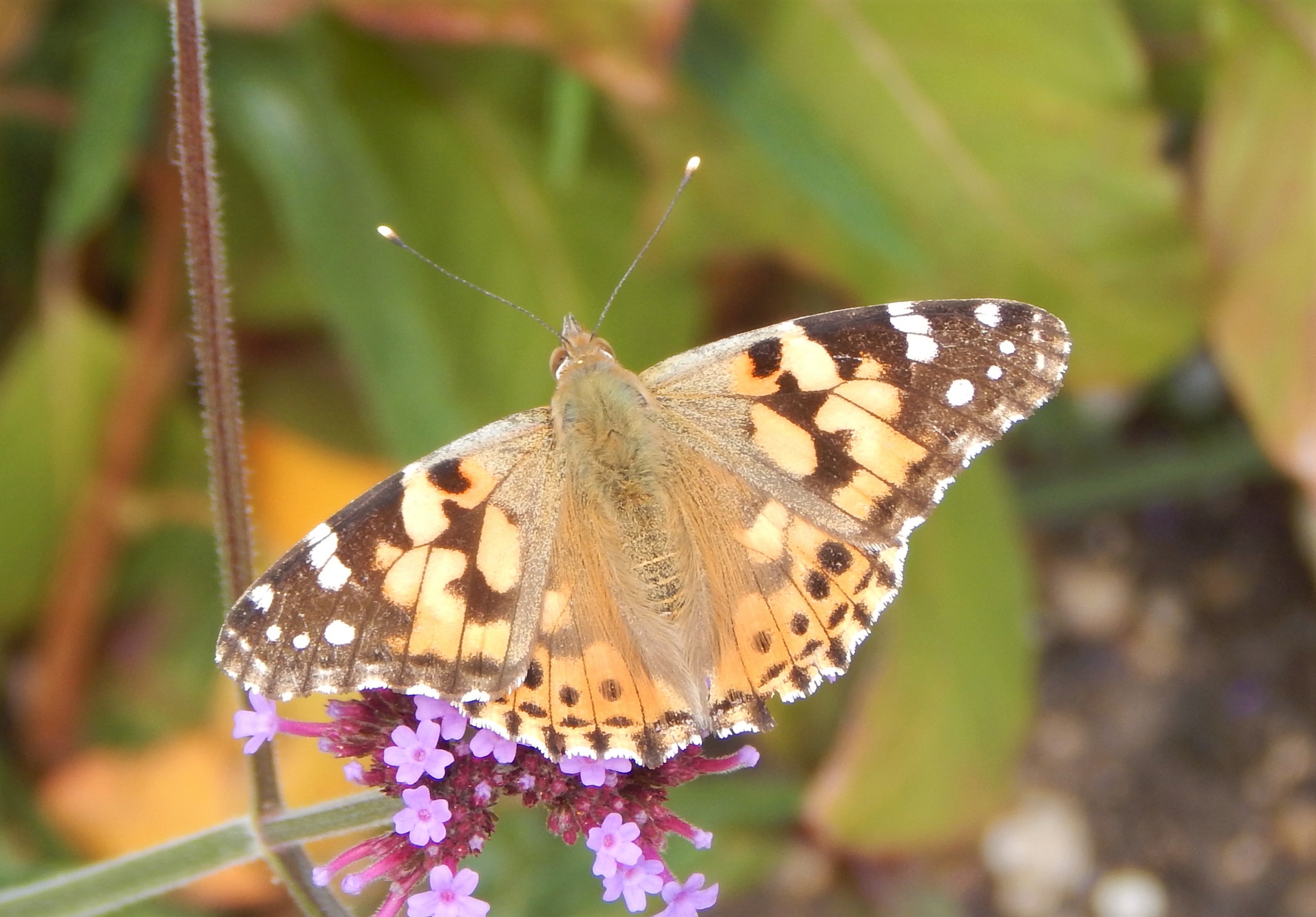
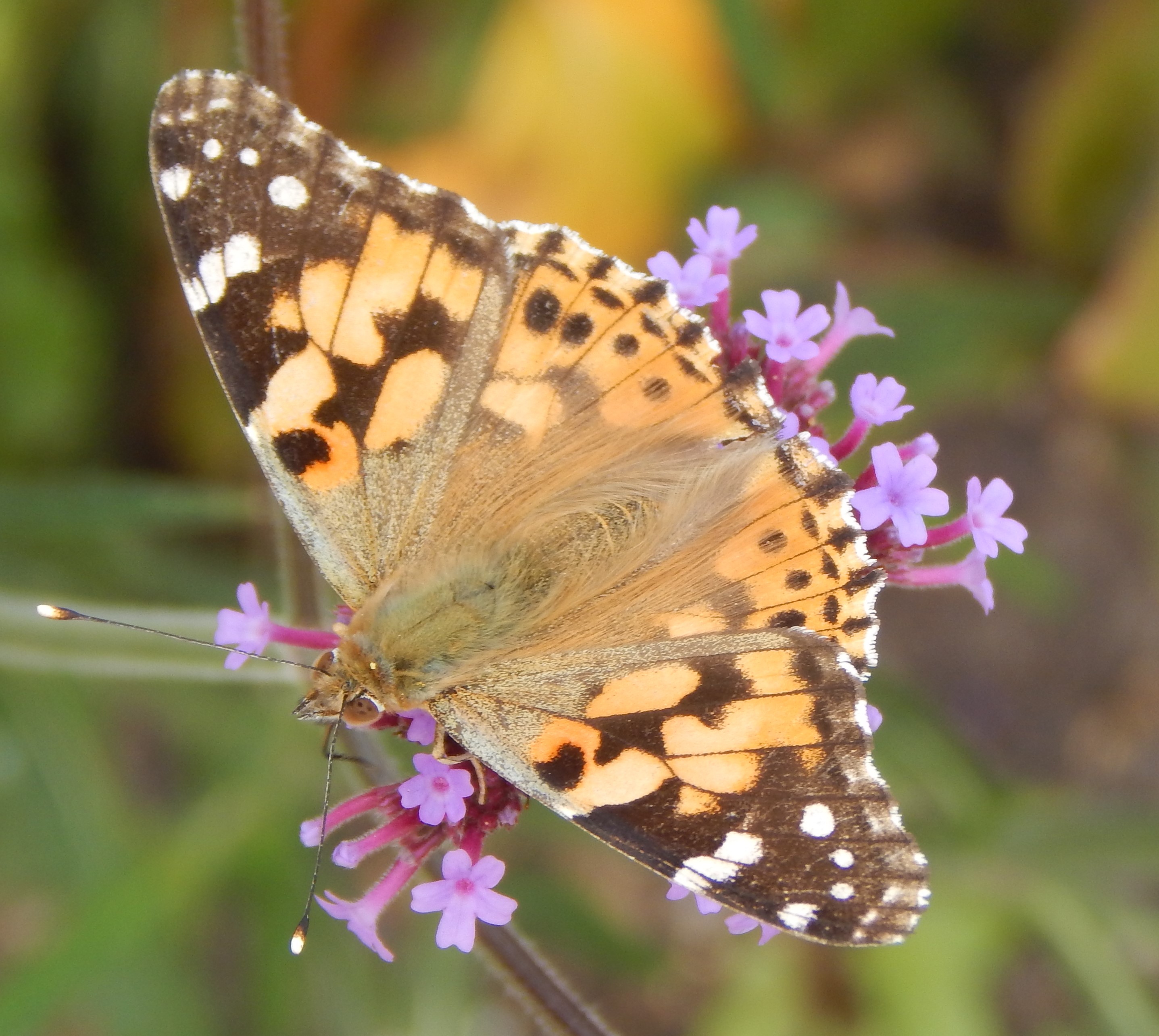
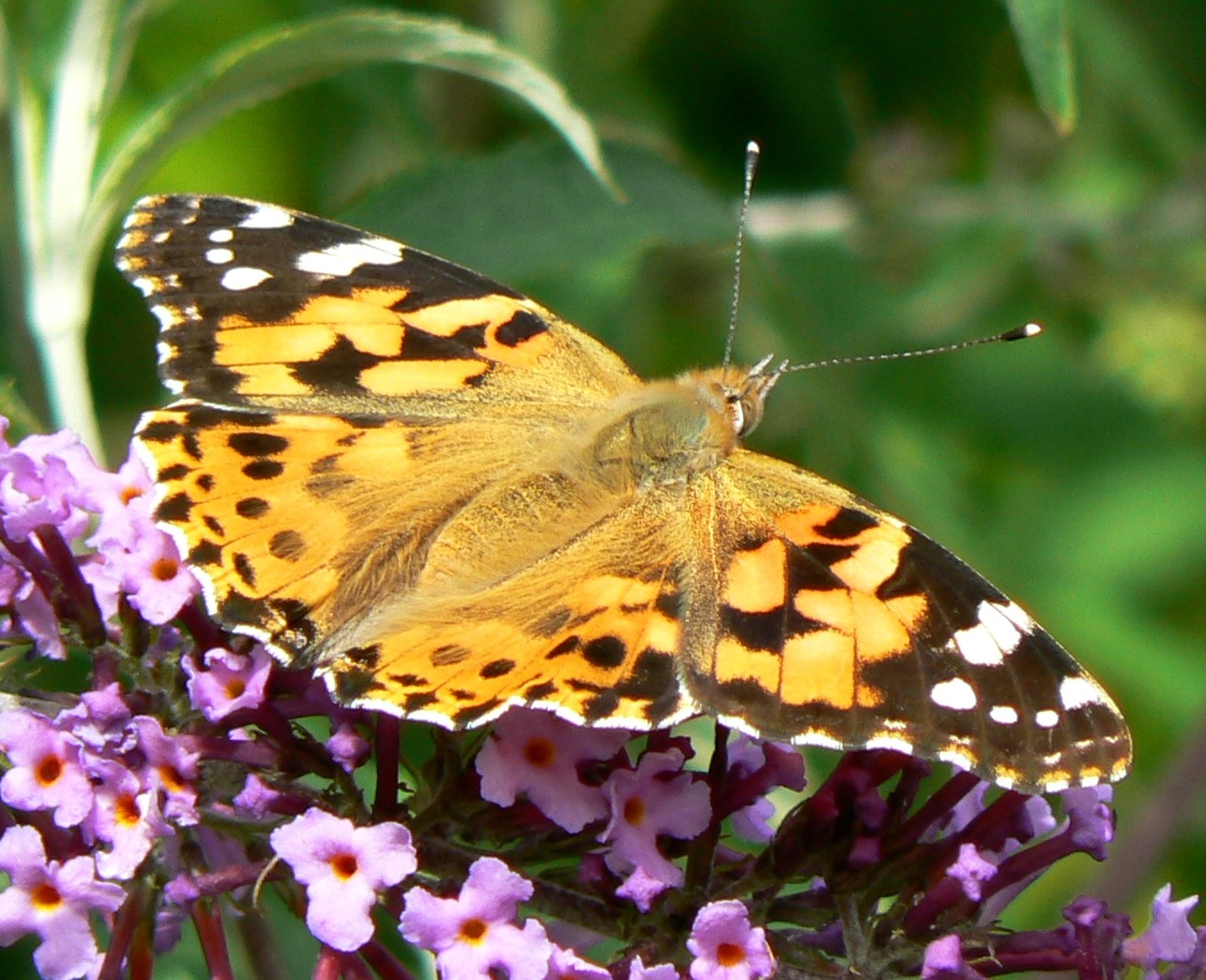
The undersides of the wings are mottled brown.
Larvae feed on a number species, mainly Asters, and including the Thistles that give it its Latin name.
Habitat
Vanessa atalanta occurs widely over the temperate areas of the Northern Hemisphere – Europe, Asia, northern Africa and North America.
Vanessa cardui is also widespread. Most of the UK population migrate here every spring from northern Africa. Possible reverse migration in autumn southwards is being studied.
Other Notes
I think the Red Admiral is well-known because it is so easy to recognize. We have no other species like it. When seen in flight a Painted Lady is not so easy to distinguish from a Tortoiseshell or Comma.
See also
You can find all the Butterflies covered in this blog from the Butterfly Category.
